This post may contain affiliate links. Please see our disclosure policy.
Bee balm jelly is a surprisingly delicious savory homemade jelly with beautiful color in the jar!
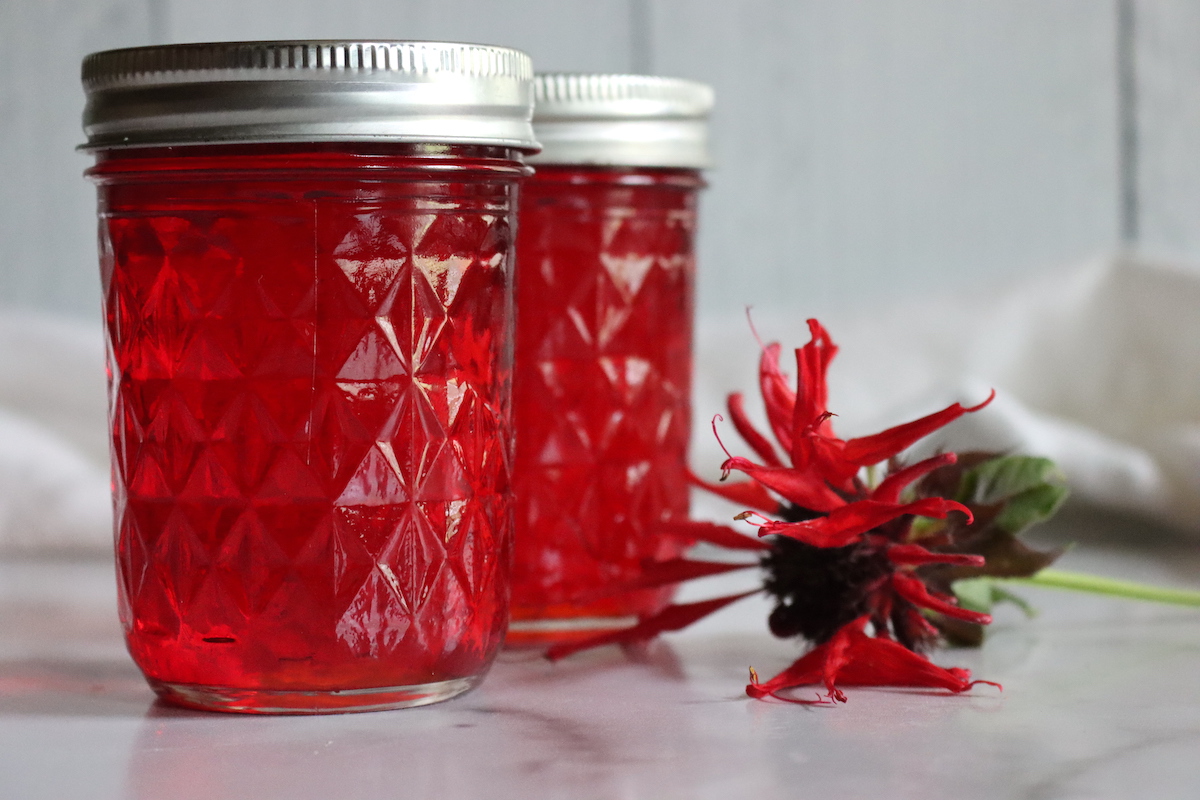
Bee balm is a beautiful addition to any perennial flower garden, but few people know that these stunning flowers are also tasty edible flowers!
Not only are the flowers edible, but the greens and stems are too, and they’re used in place of oregano and marjoram in cooking. The leaves have a delightful herbal quality, and honestly, it does taste a bit like a mix between oregano and marjoram, but with a bit of something extra. It’s almost a bit exotic, and you can’t quite put your finger on it.
Bee balm flowers have a spicy flavor, and that same spicey flavor is what makes them medicinal flowers as well. They’re used in herbal remedies for coughs and other respiratory complaints, as well as sore throats.
Those same spicy flowers will make a really delicious savory herbal jelly that’s perfect for use on a charcuterie plate.
(I’ve written this recipe as a savory herbal jelly, including wine and other savory ingredients that help balance it, given that the flowers taste herbal. If you’d like to make a sweet floral jelly instead, you can use the petals in my basic floral jelly recipe. They work well there too, and it’ll be sweet and spicy, a bit like a peach habanero jam. Still delicious, but in a different way.)
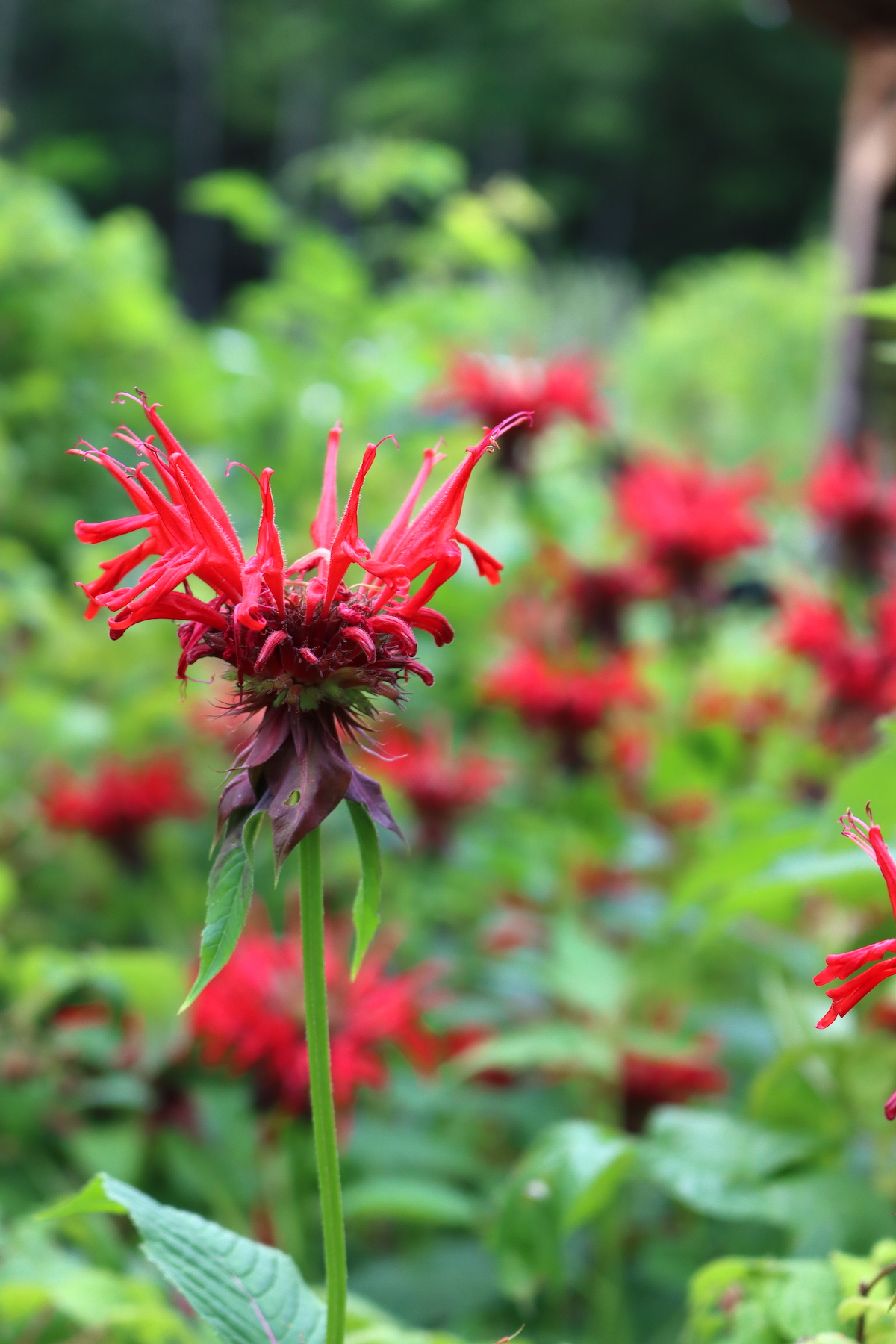
A Quick Look at the Recipe
- Recipe Name: Bee Balm Jelly
- Recipe Type: Flower Jelly Recipe
- Canning Method: Waterbath Canning
- Prep/Cook Time: 30 Minutes
- Canning Time: 10 Minutes
- Yield: 4 to 5 half pint jars
- Jar Sizes: Quarter Pint, Half Pint or Pint
- Headspace: 1/4 inch
- Ingredients Overview: Edible Flowers, Water, Lemon Juice (not optional), and sugar
- Difficulty: Easy! You’re basically making a quick tea and setting it with pectin.
- Similar Recipes: The process is very similar to making other herbal jellies, including Chive Blossom Jelly, Lemon balm Jelly, Nasturtium Jelly, or Borage Jelly.
Ingredients for Bee Balm Jelly
To make a bath of 40 oz (5 half-pint jars) of bee balm jelly, you will need to gather the following:
- 2 cups fresh bee balm blossoms
- 1 box (1.75 oz) low-sugar pectin (such as Sure Jell No Sugar)
- 1 to 2 cups sugar
- 1 cup vinegar (either wine vinegar, white, cider, or rice)
- ¼ cup lemon juice
- 4 cups water (or 2 cups water and 2 cups white wine)
I’ve made this as a “savory herbal jelly“ since the flavors tend to be a bit spicy, and it goes well with meats and charcuterie. You can also make this as a sweet floral jelly, and in that case, you’d follow my recipe for homemade flower jellies.
Either way, flower jellies need either lemon juice or vinegar to be safe for canning, so make sure you have some form of added acidity in there to drop the pH.

How to Make Bee Balm Jelly
You’ll need to begin by gathering your bee balm. Select a safe location to harvest bee balm from – free from herbicides, pesticides, and other pollutants. Picking from your own or a neighbor’s backyard is ideal.
Be sure to collect only bee balm blossoms – these bright red flowers give the jelly a beautiful color and spiced flavor. You’ll need to collect 2 cups of fresh blossoms.
Clean your bee balm of any lingering dirt, residue, or insects, and discard any green bits – you’ll only need the petals for this jelly recipe. Move the flowers to a large heat-safe container, such as a large glass measuring cup or decanter. In a separate pot, bring your mixture of wine and water to a boil (or just water if you choose) and pour over your flowers to steep. Cover for a stronger flavor and allow to brew for 10 to 15 minutes.
Once your bee balm tea is fully steeped, strain the flowers from the mixture with the help of some cheesecloth or a fine mesh strainer.
Pour into a large saucepan or jam pot and add in the lemon juice, vinegar, and pectin. Stir to mix and bring to a boil.
Boil this mixture of tea, lemon juice, vinegar, and pectin for one full minute.
Next, you can add in the sugar. Stir and boil for another full minute. Remove from heat and ladle into prepared jars.
Apply 2-part canning lids and process in a water bath canner for 10 minutes. For refrigerated jelly, simply allow jars to cool to room temperature and refrigerate. Refrigerated jelly will last up to 4 weeks. Jelly that is canned and sealed will keep for 12 to 18 months.
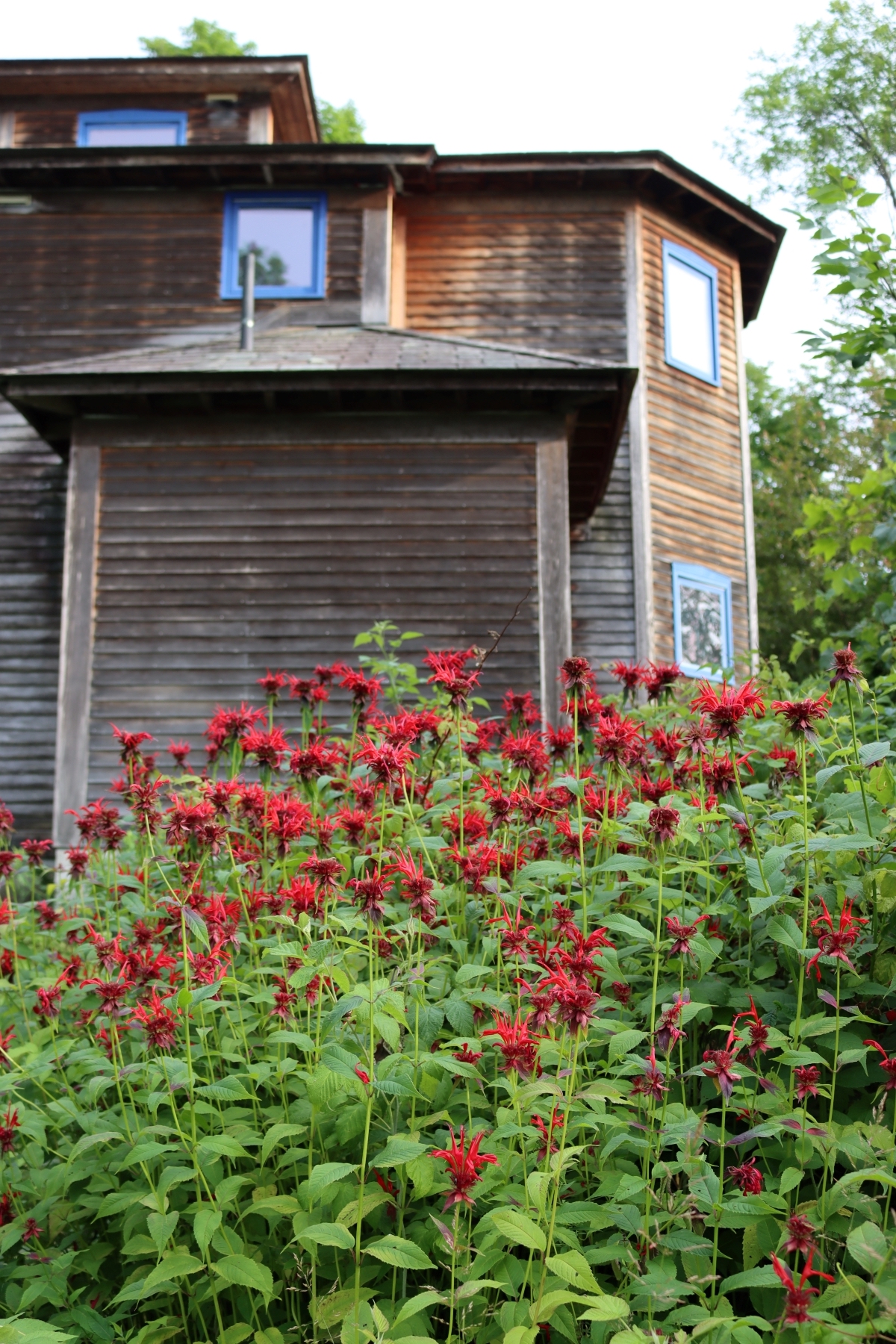
Bee Balm Jelly Variations
Bee balm blossoms render a tasty, savory jelly that is delicious on its own. However, you may wish to add additional components to this classic jelly to achieve different flavors.
You can create sweeter variations of this flower jelly by adding more sugar (up to 4 cups instead of two) if you prefer sweetened spreads. Additionally, you can add in complementary herbs when brewing your blossom tea for complex notes – consider adding mint, ginger, honey or lemon zest.
The incorporation of other fruits is also sometimes added to sweet or savory herb jellies. Cranberry bee balm can be made with the addition of cranberry juice. Other variations include adding apple juice or apple cider.
Canning Bee Balm Jelly
Bee balm jelly may be tasty – but even the most avid jelly-enthusiast will find it difficult to eat an entire batch in a month. Bee balm jelly can be refrigerated for up to 4 weeks and frozen for 6 months.
Storing for longer? You’ll want to can your jelly instead.
Prepare your jars ahead of time before beginning your jelly – you’ll want to ladle the fresh, hot jelly directly into sterilized jars.
Once your jelly has reached the desired consistency, ladle it into your sparkling, clean canning jars, leaving about a ¼ inch of headspace.
Wipe the rims of the jars to remove any lingering jelly to ensure a clean seal. Apply 2-part canning lids and close tightly. Immediately process in a water bath canner for 10 minutes (or 15 minutes if above 6,000 feet in elevation).
Remove carefully and place in a stable location out of the way of pets and children. Check your seals after a minimum of 12 hours to ensure proper sealing. Store in the pantry or gift away! Refrigerate jelly after opening.
Ways to Use Bee Balm Jelly
Herbaceous bee balm jelly can be added to a variety of food items. This lightly floral, herbal jelly makes a great addition to sandwiches and crackers. Spread it on muffins, biscuits, and scones for a savory bite, or add a dollop to cheese boards along with nuts, brioche, and wedges of cheese.
Looking for a simple midday snack? Cream cheese with jelly on crackers never fails to satisfy.
Additionally, try using this flavorful jelly as a glaze on meats and fish. Just spoon a dash atop your protein and bake a few more minutes or supply as a garnish post-cooking.
Bee Balm Recipes
Looking for more ways to use bee balm?
- Bee Balm Oxymel
- Bee Balm Tincture
- Bee Balm Tea
- Bee Balm Cookies
- Bee Balm Hand Cream (for skin, not to eat)
If you tried this Bee Balm Jelly Recipe, or any other recipe on Creative Canning, leave a ⭐ star rating and let me know what you think in the 📝 comments below!
And make sure you stay in touch with me by following on social media!
Flower Jelly Recipes
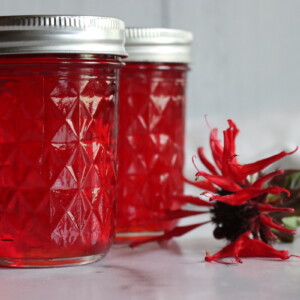
Bee Balm Jelly
Equipment
Ingredients
- 2 cups fresh bee balm blossoms, or 1 cup dried blossoms
- 1 box Low Sugar Pectin, 1.75 oz low sugar pectin (such as Sure Jell No Sugar)
- 1 to 2 cup sugar
- 1 cup vinegar, either wine vinegar, white, cider or rice
- ¼ cup lemon juice
- 4 cups water, or 2 cups water and 2 cups white wine
Instructions
- Sterilize your jars before beginning your jelly – this way they are clean and ready to be filled once the jelly has achieved the right consistency.
- Gather and prepare your bee balm. You’ll need 2 cups of fresh petals, cleaned and de-stemmed.
- Next, make the bee balm tea. Transfer blossoms to a heat-safe container. Boil your mixture of 2 cups white wine and 2 cups water (or just 4 cups water if preferred) and pour over the blossoms. Steep for 10 to 15 minutes.
- Strain the flowers from the liquid and pour the liquid into a large saucepan or jam pot. Add the lemon juice, vinegar, and pectin to the mixture. Stir and bring to a boil. Boil for a full minute before adding the final ingredient.
- After the mixture has boiled for a full minute, add in the sugar. Return to boil, stir, and boil for another full minute. Remove from heat.
- Ladle the jelly into prepared jars, leaving ¼ inch headspace. Clean rims or any lingering residue and cap. For canning, process the jars in a water bath canner for 10 minutes (or 15 minutes if above 6,000 feet in elevation). For refrigerator jelly, allow the jars to cool to room temperature before storing in the freezer or refrigerator.
Nutrition
Nutrition information is automatically calculated, so should only be used as an approximation.
Herbal and Flower Jellies
Looking for more flavorful herbal or flower jellies?
- How to Make a Herbal Jelly (Savory or Sweet)
- How to Make a Flower Jelly (with Any Edible Flower)
- Rose Petal Jelly
- Spruce Tip Jelly
- Lilac Jelly
- Dandelion Jelly
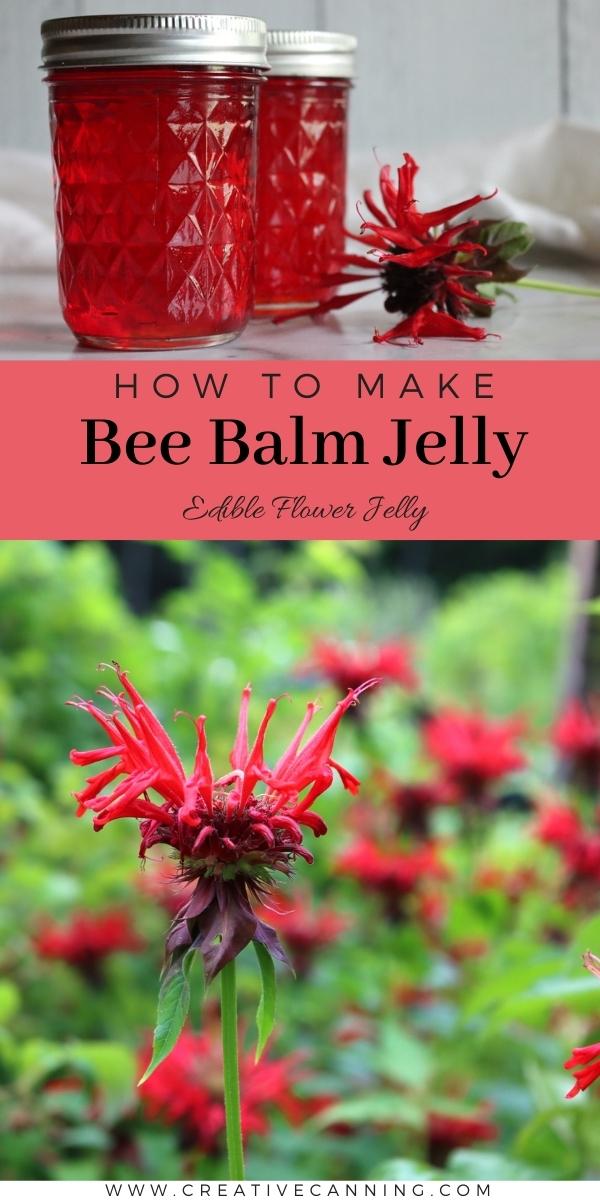
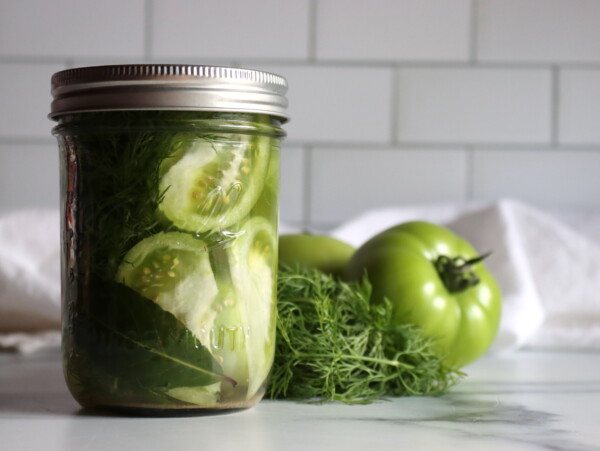
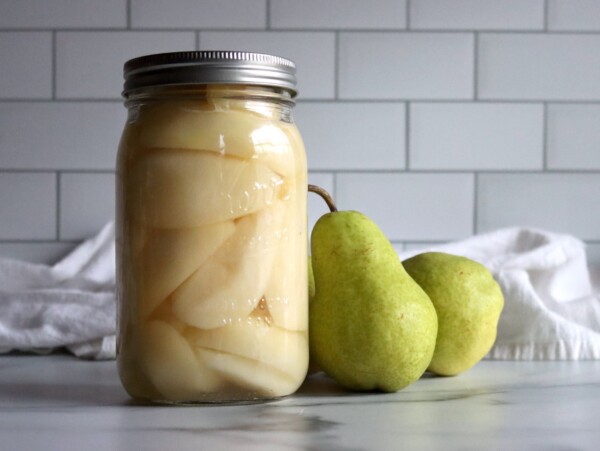
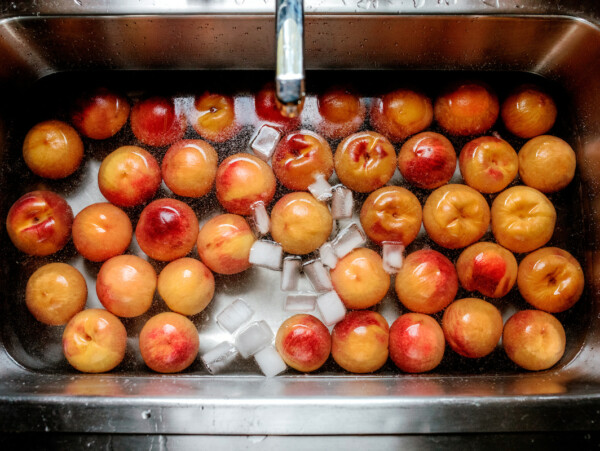
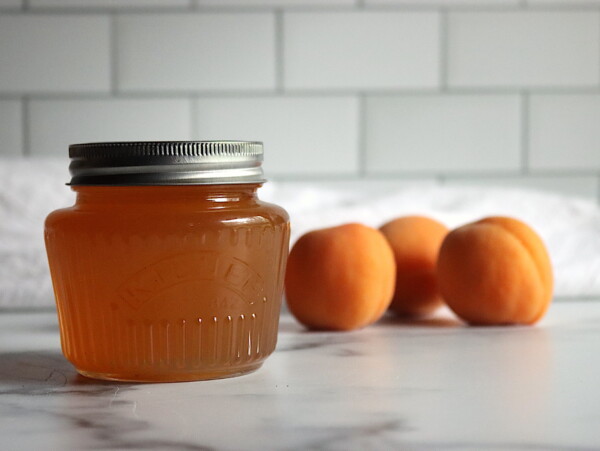
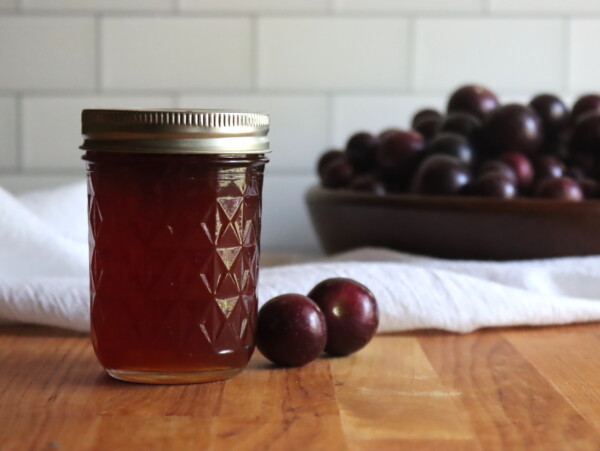
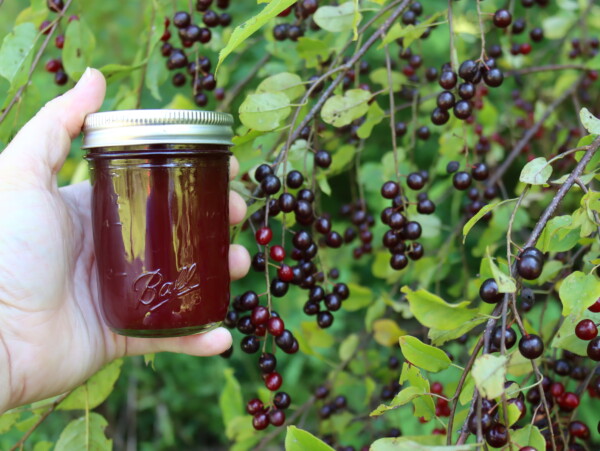
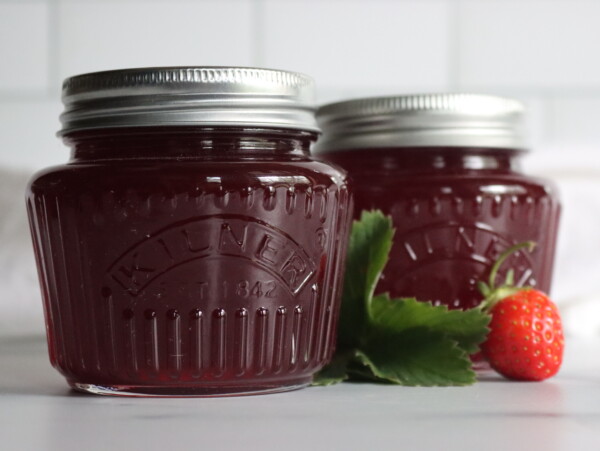
You continue to amaze and inspire with your depth of knowledge, excellent tried and true recipes as well as your hands on skills and approach. Thank you!!
Thank you!
I have made many uncommon variants of jelly over the past few years and with great success. this one, not so much. I followed this recipe exactly and had all my ingredients premeasured and ready to go. this jelly came out looking beautiful but has the consistency of water. It will not set up, not even close. What could i have possibly done wrong???
There’s nothing specific to bee balm that’d prevent the jelly from setting. I actually haven’t had a jelly with pectin fail to set, even after hundreds of batches over the years, so I’m always kind of at a loss for how to troubleshoot this one for others. Here’s a troubleshooting guide for jellies not setting, hopefully it’s helpful: https://extension.psu.edu/preventing-jam-and-jelly-from-not-setting